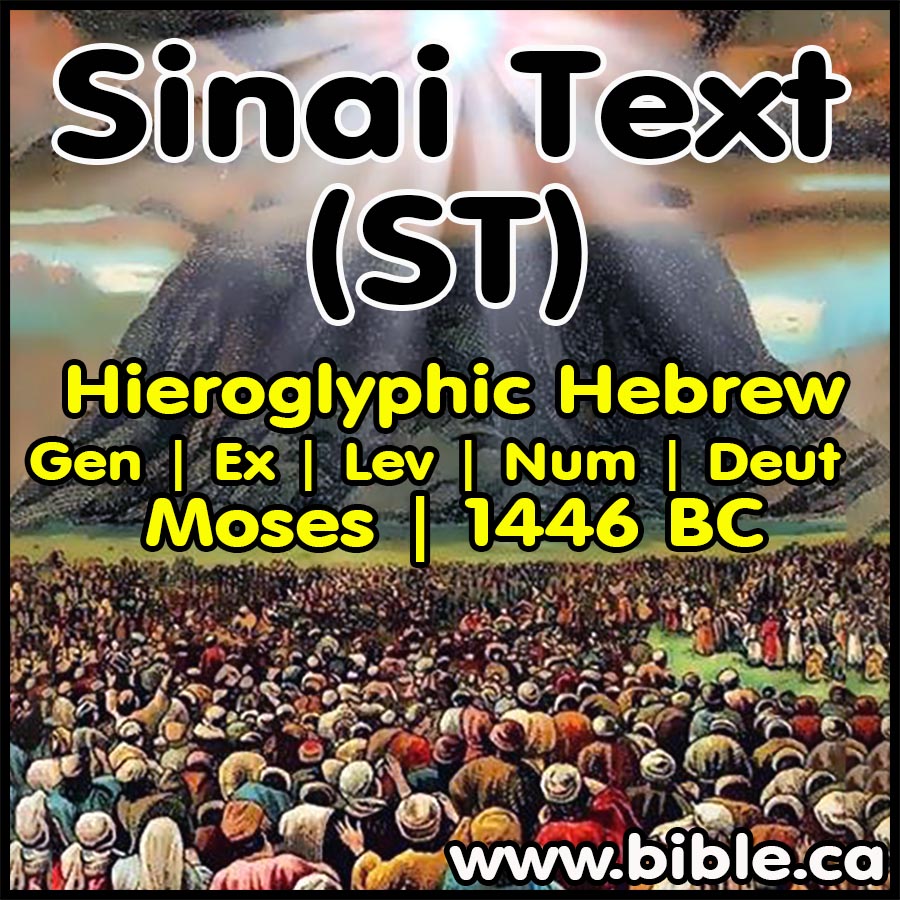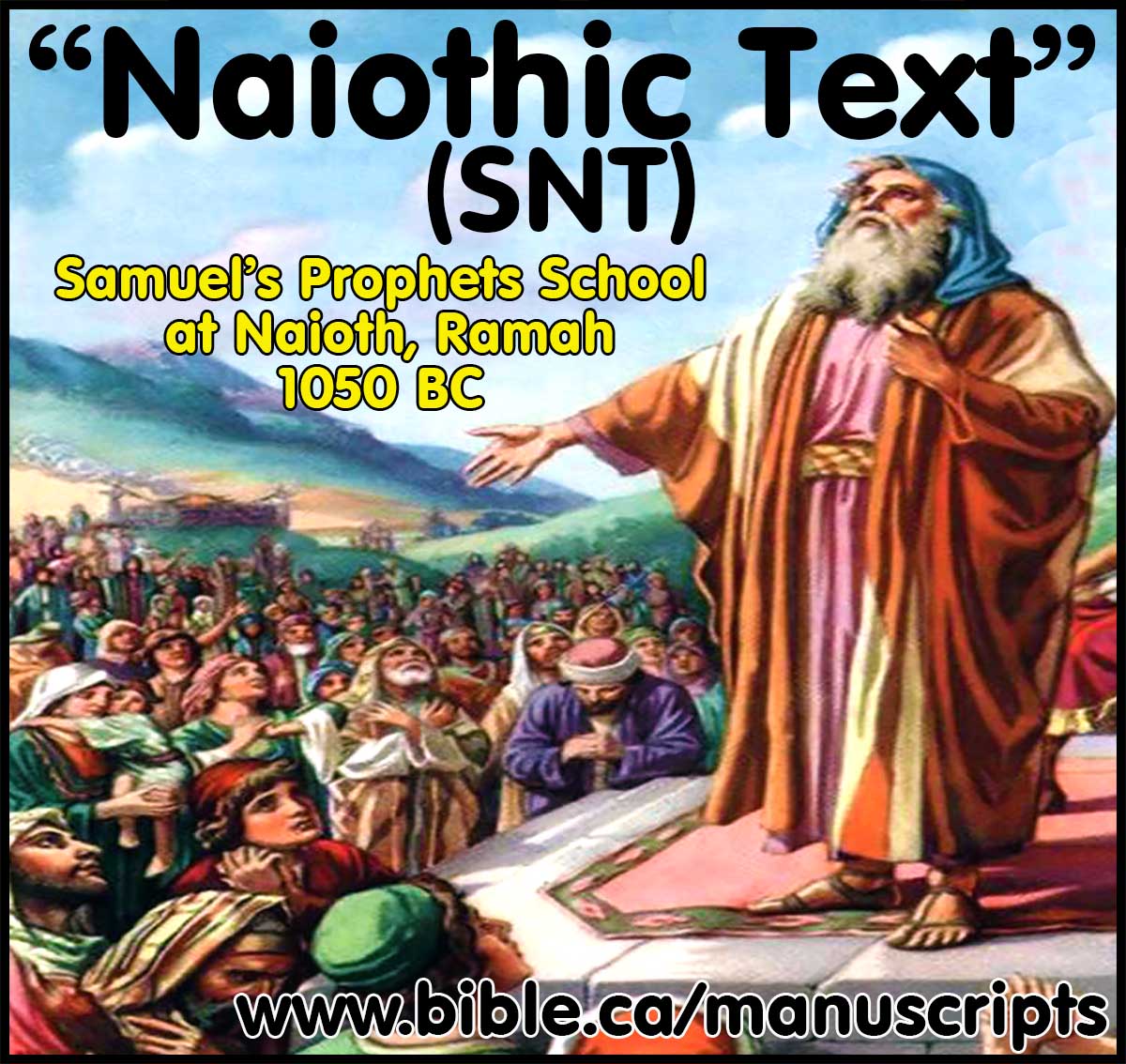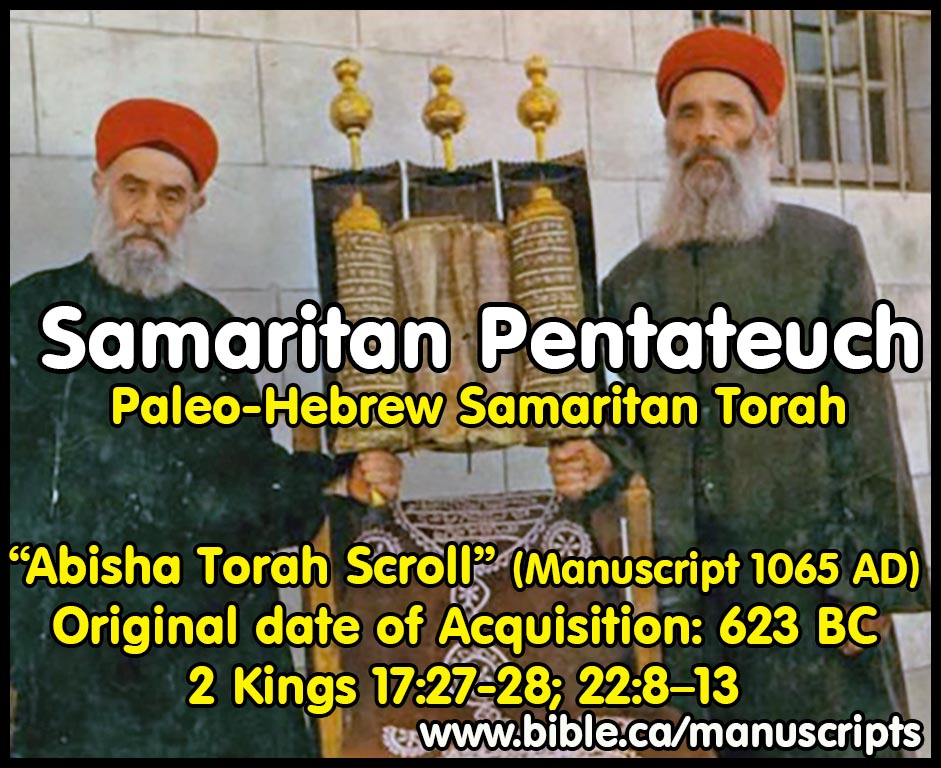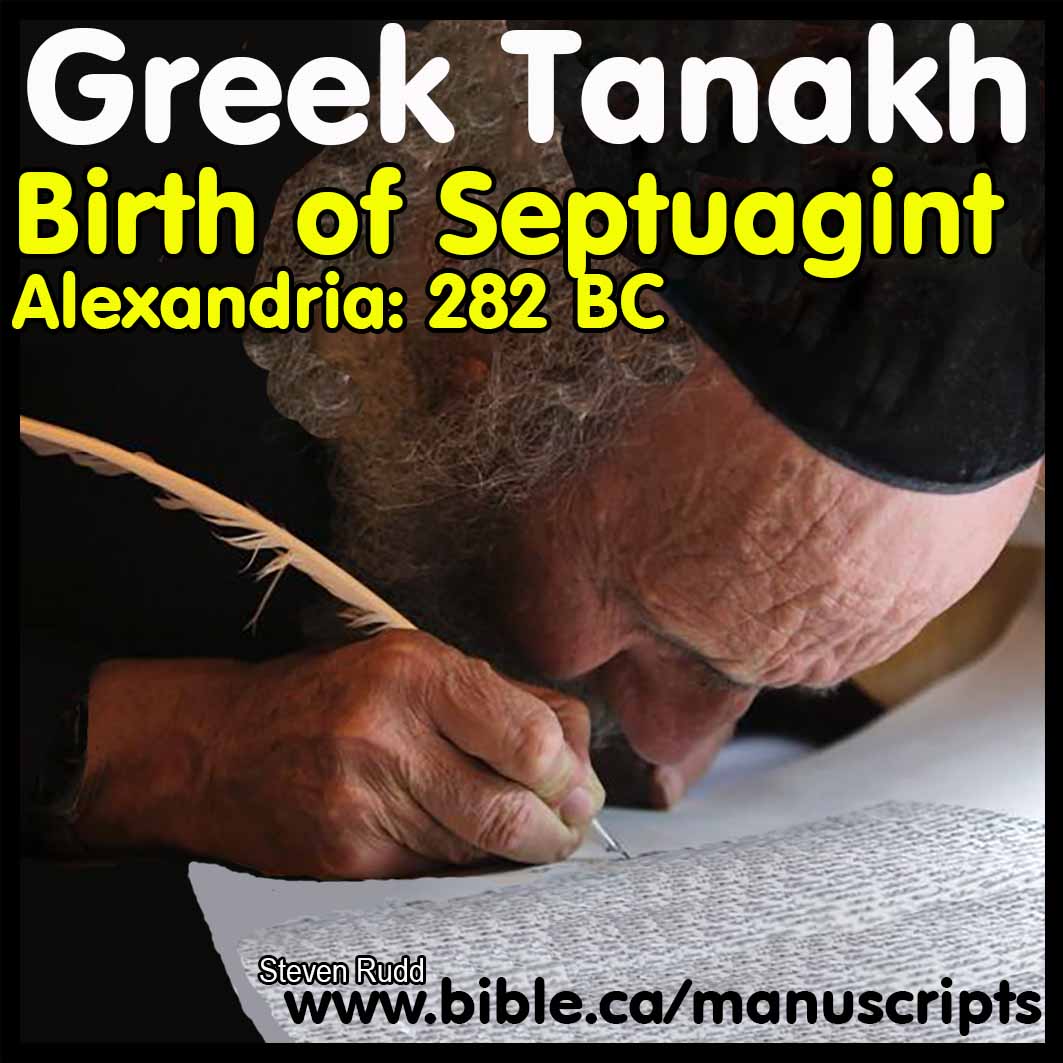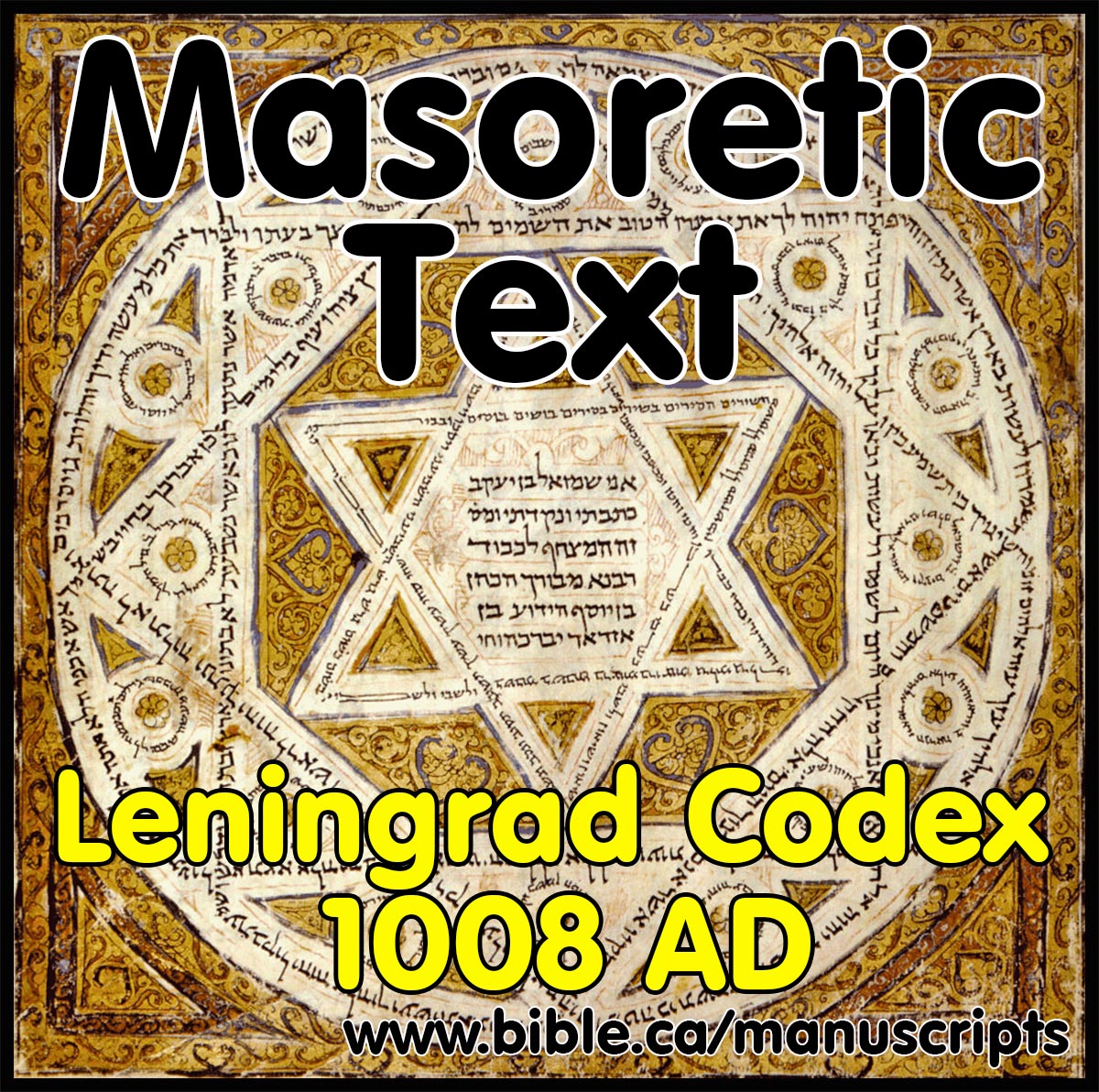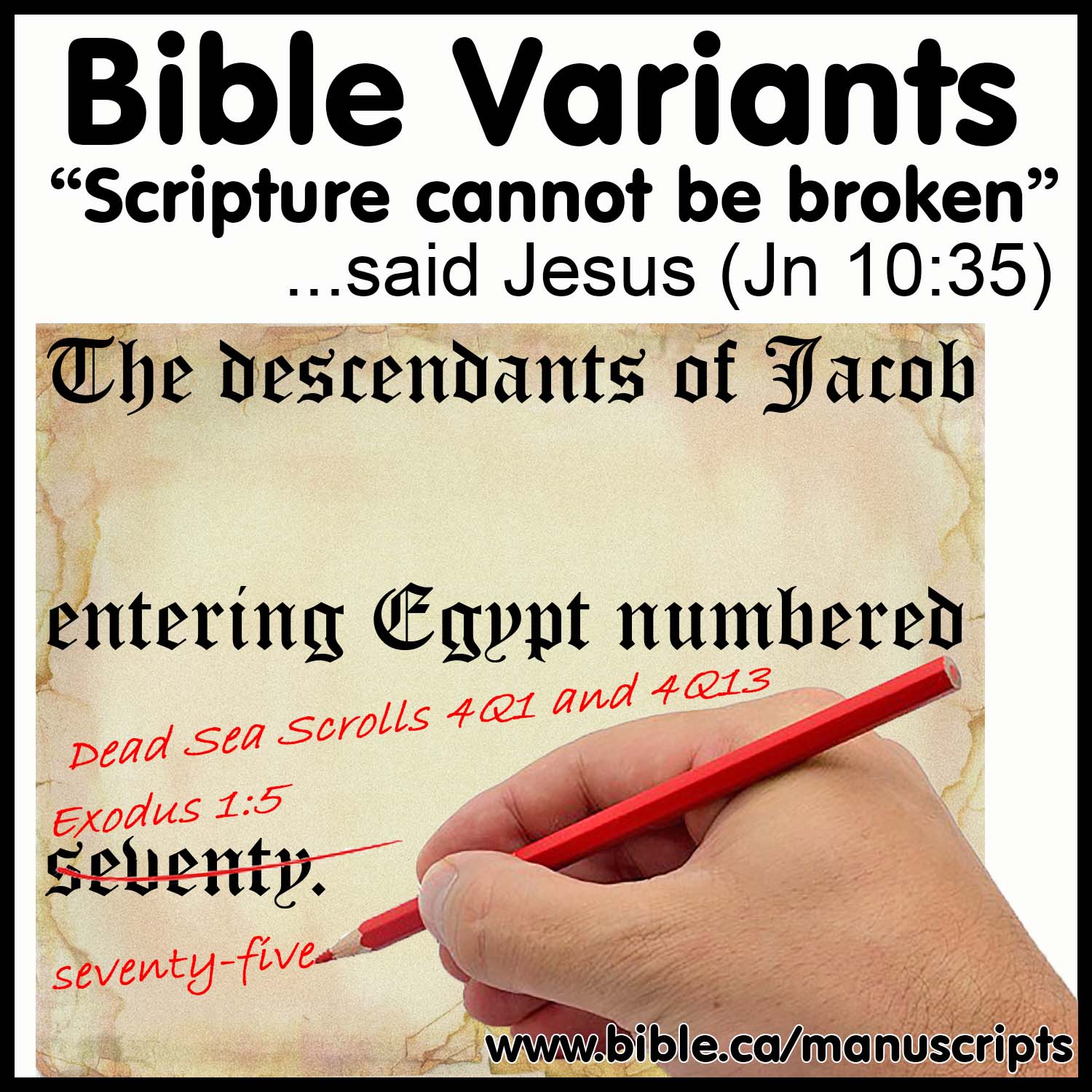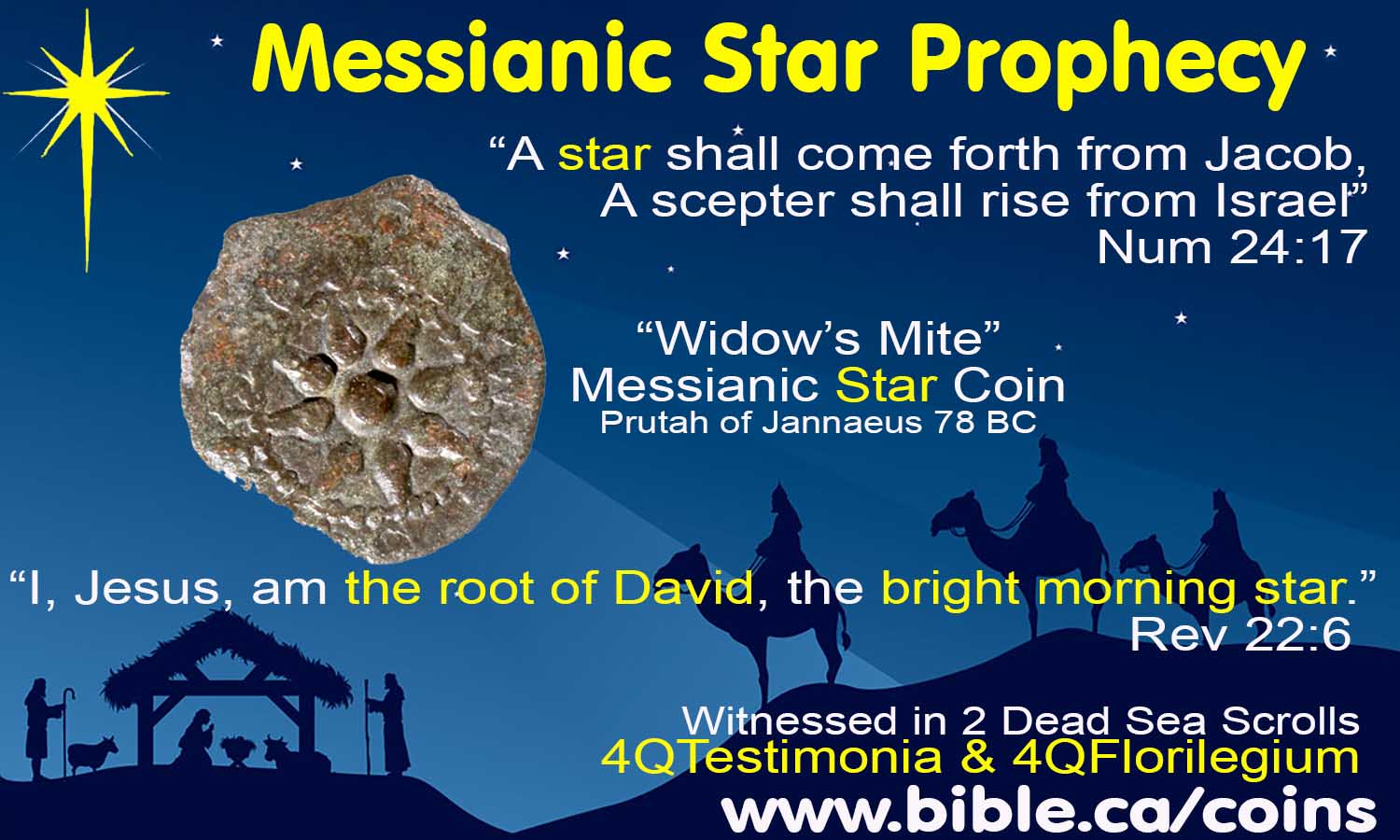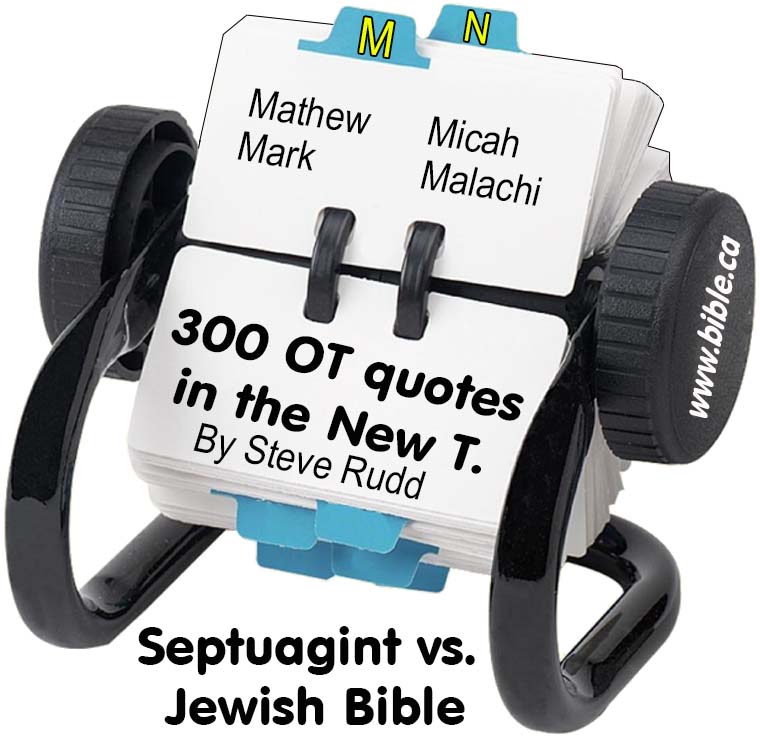A Greek Septuagint LXX in every Synagogue
Translations: Septuagint was “KJV” of Synagogues and Churches
"Scripture cannot be broken" (Jesus, John 10:35)
Steve Rudd 2017
Abstract:
From the tower of Babel, God knew translations of his inspired word would be made into hundreds of different languages yet still carry the same force, authority and message. This is what Jesus meant (in part) when He said that “scripture cannot be broken” in John 10:35. Today Christians regard our translations like the King James Version (KJV) or the New American Standard Bible (NASB) as equal to the autograph in authority. When a preacher reads from his English Bible it is considered equal to the inspired word of God. The words of the English Bible are the words of God! When Jesus began his ministry the Greek translation of the Hebrew Tanakh had been in use so long throughout the entire world that it was considered equal to the original Hebrew. Hebrew went extinct around 300 BC as a common working language of the Jews. At the time of Jesus, Aramaic was the native language but Greek was the working language of all Jews the world over. Weekly Synagogue sabbath worship services were conducted entirely in Greek not Hebrew and the Septuagint was their Bible. Christians regard the translation KJV as the word of God in exactly the same way that Jews at the time of Jesus regarded the translation Septuagint. Each of the thousands of synagogues in and outside Judea used the Septuagint as their standard Bible for worship, preaching and devotional reading. Augustine in 400 AD makes this timeless observation true of Jews in 100 BC and Christians today: “Nevertheless, the Church has adopted the Septuagint as if it were the only translation. Indeed, Greek-speaking Christians use it so generally that many of them do not even know that the others exist. From the Septuagint a Latin translation has been made, and this is the one which the Latin churches use.” (Augustine, City of God 18.43, 400 AD) God foresaw at the tower of Babel the His word MUST be translated and the Holy Spirit wrote it in such a way so that the original meaning would transcend the translation process. In 446 BC, Nehemiah translated Hebrew into Aramaic for his listeners. In 282 BC seventy two Jewish scholars from Jerusalem translated the Hebrew Tanakh into Greek for the Jews throughout the world. In 80 AD, Apostle John translated Aramaic into Greek for his readers. “Scripture cannot be Broken” even when it is translated!
Introduction:
1.
God understood when he created all the languages of men at the tower of
Babel, that His written word would need to be translated into each of these
languages.

2. Here are six times Translations were used by God’s people:
a. 446 BC: Nehemiah translated the law from Hebrew into Aramaic
b. 282 BC: The Septuagint is a translation of the entire Old Testament from Hebrew into Greek.
c. 36-80 AD: New Testament translates Hebrew Old Testament quotes into Greek:
d. 80 AD: John Translated Greek into Aramaic 5 times in his gospel:
e. 400 AD: Augustine listed 8 translations of the Bible:
f. Today: Hundreds of translations of the Bible considered equivalent to the word of God.
3. The Septuagint was to the first century Jews what the King James Version is to Christians today: The word of God
a. The 39 books of the Greek Tanakh had been translated by Jews with full approval of the Jerusalem High priests and were the standard “pulpit Bible” in all the synagogues.
b. When Jesus was handed the Isaiah scroll in His home town synagogue of Nazareth, it was the Greek Septuagint.
4. The Hebrew language was extinct at the time of Christ as a working language among the general population:
a. The Jews in Judea including Jesus spoke Aramaic as their “mother tongue” but the scriptures had never been translated into Aramaic up this time so they used the Greek Tanakh.
b. Jews in Judea could not speak Hebrew but spoke Aramaic as their default language and Greek as their working language of commerce.
c. The Jews outside of Judea spoke Greek only.
d. The need for translations of the word of God is and ancient phenomena
5. Using translations is what Jesus meant (in part) when He said that “scripture cannot be broken” in John 10:35.
a. Although Jesus could speak true native Hebrew, he did not teach in this functionally extinct language because the masses spoke Aramaic, Greek and Latin.
b. Jesus taught in Aramaic and Greek.
I. History of God’s People using a translation:
1. 446 BC: Nehemiah translated the law from Hebrew into Aramaic:
a. "Ezra the scribe stood at a wooden podium which they had made for the purpose. And beside him stood Mattithiah, Shema, Anaiah, Uriah, Hilkiah, and Maaseiah on his right hand; and Pedaiah, Mishael, Malchijah, Hashum, Hashbaddanah, Zechariah and Meshullam on his left hand. Ezra opened the book in the sight of all the people for he was standing above all the people; and when he opened it, all the people stood up. Then Ezra blessed the Lord the great God. And all the people answered, “Amen, Amen!” while lifting up their hands; then they bowed low and worshiped the Lord with their faces to the ground. Also Jeshua, Bani, Sherebiah, Jamin, Akkub, Shabbethai, Hodiah, Maaseiah, Kelita, Azariah, Jozabad, Hanan, Pelaiah, the Levites, explained the law to the people while the people remained in their place. They read from the book, from the law of God, translating to give the sense so that they understood the reading." (Nehemiah 8:4–8)
b. “The first archeological evidence for a synagogue appears in Schedia, near Alexandria in Egypt, in the third century bce. Although no synagogues are clearly attested during the period of Ezra and Nehemiah (late fifth and early fourth centuries bce), the tradition traces the practice of translating Scripture from Hebrew into Aramaic during a public reading to Ezra’s reading of the Torah to the people of Jerusalem (Nehemiah 8; b. B. Qam. 82a; Ber. 33a; Meg. 17b). According to Neh 8:7, the Levites helped the people to understand the Torah by interpreting or giving meaning to the words.” (Zephaniah, M. A. Sweeney, p30, Targum Zephaniah 2003 AD)
2. 282 BC: The Septuagint is a translation of the entire Old Testament from Hebrew into Greek.
a. 99% of first century Jews could not speak or read Hebrew and used the Greek version in their Synagogues in and outside of Judea beginning in 280 BC.
b. The Septuagint was the “standard issue Tanakh” for the thousands of synagogues at the time of Jesus and was considered equal to the Hebrew autograph in authority without question.
3. 36-80 AD: New Testament translates Hebrew Old Testament quotes into Greek:
a. Only the Jerusalem temple elites (High priest and Sadducees) spoke true Hebrew in the first century.
b. God chose that the New Testament was written in Greek in 282 BC when through His providence, the Hebrew Bible was translated into Greek (Septuagint).
c. Jesus, Matthew, Paul and the Hebrews writer were trilingual and translated Hebrew directly into Greek.
i. Jesus astonished the Temple teachers in part, because he spoke the extinct true Hebrew at age 12: "Then, after three days they found Him in the temple, sitting in the midst of the teachers, both listening to them and asking them questions. And all who heard Him were amazed at His understanding and His answers." (Luke 2:46–47)
ii. Jesus defaulted to Aramaic not Hebrew because he cried to God in Aramaic on the cross: "My God, why have you forsaken me" (Mark 15:34).
iii. Matthew was a tax collector in Capernaum who clearly had a working understanding of Hebrew based upon the many intricate arguments in his gospel directly dependant upon knowing Hebrew.
iv. Although Paul was born in Tarsus, he grew up in Jerusalem from a young child and it is clear that he spoke native true Hebrew. In 36 AD Paul was the “star” of the Jerusalem Sanhedrin being educated under a Pharisee named Gamaliel: "But a Pharisee named Gamaliel, a teacher of the Law, respected by all the people, stood up in the Council and gave orders to put the men outside for a short time." (Acts 5:34) "“I am a Jew, born in Tarsus of Cilicia, but brought up in this city, educated under Gamaliel, strictly according to the law of our fathers, being zealous for God just as you all are today." (Acts 22:3)
d. Apostles Mark, Luke and John likely did not speak Hebrew.
4. 80 AD: John Translated Greek into Aramaic 5 times in his gospel:
a. Five times John Translated Greek into Aramaic for the diaspora Jews who did not speak Aramaic:
i. “Bethesda” (Jn 5:2) "Now there is in Jerusalem by the sheep gate a pool, which is called in Hebrew [Aramaic] Bethesda, having five porticoes." (John 5:2)
ii. “Gabbatha” (Jn 19:13) "Therefore when Pilate heard these words, he brought Jesus out, and sat down on the judgment seat at a place called The Pavement, but in Hebrew [Aramaic], Gabbatha." (John 19:13)
iii. “Golgatha” (Jn 19:17) "They took Jesus, therefore, and He went out, bearing His own cross, to the place called the Place of a Skull, which is called in Hebrew [Aramaic], Golgotha." (John 19:17)
iv. "rabboni" (Jn 20:16) "Jesus said to her, “Mary!” She turned and said to Him in Hebrew [Aramaic], “Rabboni!” (which means, Teacher)." (John 20:16)
v. "Therefore many of the Jews read this inscription, for the place where Jesus was crucified was near the city; and it was written in Hebrew [Aramaic], Latin and in Greek." (John 19:20)
b. Hebrew had been extinct for close to 400 years when the gospel of John was written.
i. ““In Hebrew” is usually understood to mean, “in the language spoken by the Jews,” that is “in Aramaic”” (NICNT, Jn 5:2, 1995 AD)
ii. "But as Dalman pointed out, words such as Γαββαθᾶ in John 19:13 which are described as Ἑβραϊστί are actually Aramaic. The Greek phrase calls the dialect “Hebrew” only in the sense that Hebrews or Jews were using it, just as the reference in Daniel 1:4 to the “tongue of the Chaldeans” does not refer to the native Semitic language of the Chaldeans but to Aramaic which they had adopted (cf. Dan. 2:4). (Greek, Hebrew Aramaic, or Syriac?, E. M. Yamauchi, Bibliotheca Sacra, 131, p322, 1974 AD)
iii. The Judean Jews including Jesus, spoke Aramaic as their mother tongue but were all fluent in Greek.
iv. John’s gospel was to the Greek speaking Christians outside Judea who did not speak Aramaic so he translated Aramaic words into Greek throughout his gospel.
5. 400 AD: Augustine listed 8 translations of the Bible:
a. Augustine lists 6 translations of Hebrew into Greek: Septuagint, Aquila, Symmachus, Theodotion, and an anonymous translation which is known simply as the ‘fifth edition.’
b. Augustine lists 2 translations into Latin: Jerome translated Hebrew into Latin, and the Vulgate translated the Greek Septuagint into Latin which was the one used by al the churches.
c. “There have, of course, been other translations of the Old Testament from Hebrew into Greek. We have versions by Aquila, Symmachus, Theodotion, and an anonymous translation which is known simply as the ‘fifth edition.’ Nevertheless, the Church has adopted the Septuagint as if it were the only translation. Indeed, Greek-speaking Christians use it so generally that many of them do not even know that the others exist. From the Septuagint a Latin translation has been made, and this is the one which the Latin churches use. This is still the case despite the fact that in our own day the priest Jerome, a great scholar and master of all three tongues, has made a translation into Latin, not from Greek but directly from the original Hebrew.”(Augustine, City of God 18.43, 400 AD)
6. Today: Hundreds of translations of the Bible considered equivalent to the word of God.
a. English speaking Christians use translations like the KJV or the NASB and regard them as equal to the autograph in authority and unquestionably the word of God.
b. A tiny percentage of Christians speak Hebrew (OT) and Koine Greek (NT) is an extinct language so everyone in the world must rely upon translations.
7. “Scripture cannot be broken” This is what Jesus meant when he said
a. God’s plan from the Tower of Babel was to have His inspired words translated into hundreds of languages and still be authoritative.
b. If God accepts translations as equivalent to His word, we do well to do the same.
II. God’s master plan to prepare the Jewish people for conversion to Christianity:
- Each first century synagogue had three things Christians needed to convert Jews. God’s master plan to provide the Septuagint to 1000’s of synagogues in preparation for the coming of Christianity!
- Weekly attendance: An established pattern of weekly attendance which did not exist in Mosaic Temple worship or anywhere in the Old Testament scriptures. Being completely optional like Wednesday evening bible study in churches, only the most spiritual remnant of Jews would attend weekly Sabbath worship services. It was this remnant who converted to Christianity immediately!
- The Septuagint: A text of the Bible in the language of the common people (Greek)
- A Mikveh: Also known as “The
Christian Maker”, full immersion water baptism washed away sins in
the name of Jesus and be born again!
See full outline on Synagogue Mikvaot
See full outline on First century Ritual Purity: Mikveh and stone vessels.

- All this was part of God's plan in preparation for the birth of Jesus Christ in 2 BC and the church in 33 AD. After the first attack of Nebuchadnezzar in 605 BC until the destruction of Jerusalem in 70 AD, the Jewish state NEVER again achieved independence except for this tiny 47 year window under the Hasmoneans.
- In God's plan, the purpose of this brief period of Jewish independence was clearly preparatory for the coming of the Messiah. During the Maccabean independence the Septuagint Old Testament (LXX) was widely used being accepted and established as God's inspired word. It was the Septuagint that Greek speaking Jews and Gentiles would use to confirm Jesus of Nazareth, was the Christ of Old Testament prophecy.
- If anyone challenged the translation, they could visit the Library of Alexandria read the autograph copy for themselves. Many probably did just this and became Christians as a result!
- Maccabean distribution of the Septuagint to the thousands of Synagogues in the world:
- There was an explosion of Greek translation, copying and distribution that coincides directly with the Jewish independence under the Maccabees.
- Jewish independence began with the revolt of Matthias and John Maccabeus in 166 BC. Full independence was reached in 110 BC under John Hycranus I shortly after the liberation of Tyre in 125 BC from the Seleucids. Full independence was sustained for only 47 years (110-63 BC) and came to an end when Pompey captures Jerusalem in 63 BC and appoints Hycranus II as high priest.
- At the beginning of this short period of Jewish independence (110 BC) the Greek translations of the Jewish Old Testament scriptures (the entire Tanakh) were already fully distributed into the thousands of synagogues in and outside Judea and became the standard accepted text for Greek speaking Jews unable to speak Hebrew.
- Once the synagogues were all
equipped with the Septuagint, God took independence away from the
Maccabees when Herod the Great executed Hycranus II in Jerusalem in 30
BC. This ensured Jesus would be crucified according to scriptures under
Roman law rather than stoned under Jewish law. We have an amazing God!
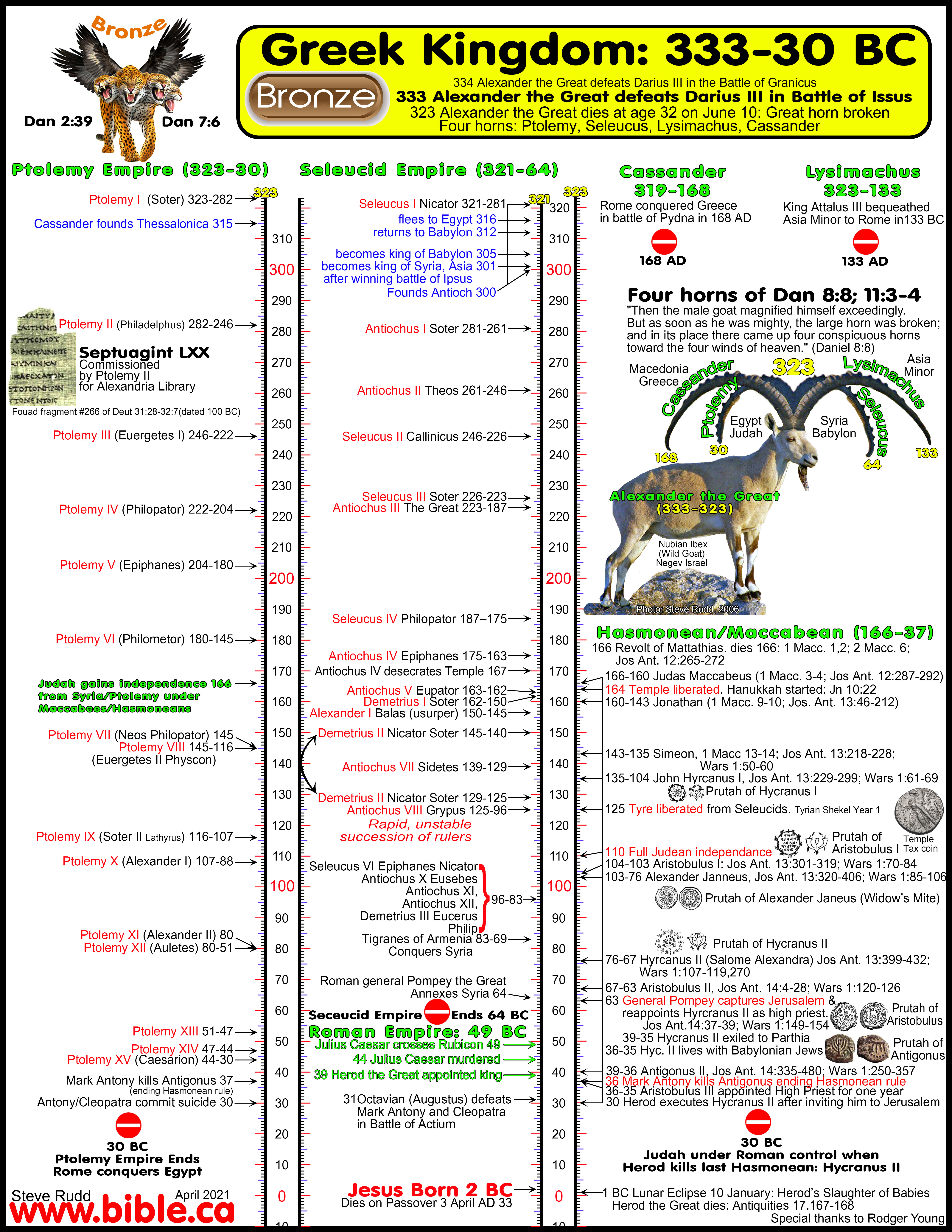
III. The Greek Septuagint (Old Testament) was the “King James Version” used by Jesus:
The Greek Tanakh (LXX) was the “standard issue, Jerusalem certified” translation used in every synagogue because Hebrew was functionally extinct in the world by 100 BC. The Septuagint: Greek translation for a Greek speaking Jewish population at the time of Jesus:
|
“If the Septuagint was good enough for Moses… IT IS GOOD ENOUGH FOR ME!!!” (So said Apostle Paul, NOT!)
At the time of Jesus, the Greek Septuagint (LXX) was accepted by the Jews in their Synagogues as “equivalent to” the Hebrew Tanakh. (Old Testament). Christians today view the English KJV or NASB as “equal to” the Greek and Hebrew originals. |
- At the time of Christ, the prophecies of Christ were accepted in two languages: Original Hebrew and translated Greek of the Septuagint.
- Today we do exactly the same thing as first century Christians. They had two Bibles available to them: the "original Hebrew" AND the Greek translation (LXX), but predominately used the Septuagint in daily reading and evangelistic efforts. We likewise have available to us two Bibles: The "original Hebrew/Greek" and English translations (NASB/KJV). We use the English translation today (and not the Greek original) for the same reason the Apostles used the Greek translation (and not the Hebrew original). Just as the English NASB/KJV are accepted today as equivalent to the original languages, so too the Greek Septuagint was accepted as equal to the original Hebrew Old Testament. Both were accepted equally as the word of God in the same way our NASB or KJV are today.
- The Greek Septuagint became the primary textual tool "lead Jew and Gentile to Christ". Indeed, the Ethiopian Eunuch's personal Old Testament was the LXX (Acts 8:26-38) which he had in his possession while in Jerusalem for the Passover festival when he was reading the Isaiah 53 passage.
- Even more important than the fact that the text of Isaiah the Eunuch was reading was Greek, was that Jewish Philip UNDERSTOOD the Greek words that the Eunuch was speaking, recognized the passage and accepted it as authentic scripture: "So he got up and went; and there was an Ethiopian eunuch, a court official of Candace, queen of the Ethiopians, who was in charge of all her treasure; and he had come to Jerusalem to worship, and he was returning and sitting in his chariot, and was reading the prophet Isaiah [in Greek]. Then the Spirit said to Philip, “Go up and join this chariot.” Philip ran up and heard him reading Isaiah the prophet, and said, “Do you understand what you are reading?” And he said, “Well, how could I, unless someone guides me?” And he invited Philip to come up and sit with him. Now the passage of Scripture which he was reading was this: “He was led as a sheep to slaughter; And as a lamb before its shearer is silent, So He does not open His mouth. “In humiliation His judgment was taken away; Who will relate His generation? For His life is removed from the earth.” The eunuch answered Philip and said, “Please tell me, of whom does the prophet say this? Of himself or of someone else?” Then Philip opened his mouth, and beginning from this Scripture he preached Jesus to him. As they went along the road they came to some water; and the eunuch said, “Look! Water! What prevents me from being baptized?” And Philip said, “If you believe with all your heart, you may.” And he answered and said, “I believe that Jesus Christ is the Son of God.” And he ordered the chariot to stop; and they both went down into the water, Philip as well as the eunuch, and he baptized him." (Acts 8:26-38)
- Finally, the majority of New Testament quotations of Old Testament prophecies came from the Septuagint. This means the Holy Spirit Himself considered the Greek translation good enough to be considered equal to the long lost autograph Hebrew copy written in Paleo-Hebrew script that went extinct around 550 BC.
- In a kind of pre-echo of John the Baptist, the Maccabees "prepared the way of the Lord" in making the LXX a universally accepted translation of the Hebrew scriptures during the 103 year period of 166-63 BC of their rebellion (or as they saw it, attempt at self government).
- The day the church was born on
Sunday 21 May 33 AD, the apostles baptized 3000 Jews (Acts 2:41) in
Jerusalem (likely in the recently discovered Olympic size pool of Siloam,
Mikveh) and a few weeks later the men alone numbered 5000 (Acts 4:4). See
full
outline on the Synagogue Mikveh.

- What is amazing, is that given the Pentecost audience was comprised of Greek speaking Jews from around the world (Acts 2:5-11) and each initially heard the apostles speaking in their native-born tongue.
- When Peter addressed the entire crowd in his great “first church sermon” on Pentecost, he spoke in Greek, not Hebrew and certainly read from the Greek Septuagint. This is because most knew little or no Hebrew but all spoke the universal common Greek language of the Hellenistic and Roman empires.
- So the language of Peter's first sermon on the day of Pentecost where he says, "Repent and be baptized in the name of Jesus Christ for the remission of sins" (Acts 2:38) was spoken in Greek not Hebrew to the audience!
- "Now there were Jews living in Jerusalem, devout men from every nation under heaven. And when this sound occurred, the crowd came together, and were bewildered because each one of them was hearing them speak in his own language. They were amazed and astonished, saying, “Why, are not all these who are speaking Galileans? “And how is it that we each hear them in our own language to which we were born?" (Acts 2:5-8)
Conclusion:
1. There is a direct line of divine providence that connects the Tower of Babel to the thousands of first century synagogues each of which was equipped with everything needed to convert Jews to the church:
a. Weekly attendance by a VOLUNTARY spiritual remnant of the Jews
b. The Greek Septuagint bible translation
c. The Christian Maker: A Mikveh which Christians used as a full immersion baptistry to wash away sins. See full outline on Synagogue Mikvaot.
2. Translations have always been part of God’s plan and nothing has changed from the time of Christ to the present because both periods used translations of God’s word and considered them equivalent in every way to the authoritative inspired word of God. Quoting a translation equals quoting the autograph.
3.
Apostle Paul said: “If the Septuagint was good
enough for Moses… IT IS GOOD ENOUGH FOR ME!!!”

a. Of course Apostle Paul NEVER said this, but it pokes appropriate scorn at Christians known as “KJV-ONLY’s” who believe it is a sin to use any other English translation OTHER than the King James Version. In a shocking display of their naiveite, they have actually been quoted to say “If the KJV was good enough for Paul… its Good enough for me.” NOT!
b. See also: "KJV Only" advocates refuted!
c.
The easiest way to refute the “KJV-ONLY’s” is to show
them an original “first printing” page from the 1611 AD version and point out
the marginal notes where the translators were unsure of which way to render a
word and included alternate readings based upon variant extant manuscripts.
Also the letter J is never used in the original KJV because the letter J did
not exist in the English language at this time. The letter I is used in place
of J. Jesus is spelled “Iesus” and Jehovah is spelled “Ievohah”. (So much for
the Jehovah’s witnesses who claim THEY restored the name of God. See full outline)
This original leaf of Matthew 13 from the 1611 KJV is in possession of
the author.
Click on photo for high resolution page of first printing
1611 KJV

d.
Having had many discussions with those who advocate
that the translators were inspired in 1611 AD, I can bear witness that they
have little historical Bible knowledge, are shockingly closed minded to the
most obvious facts, suffer from a unique over self-confident arrogance and
display elements of spiritual elite supremacism. We supply this to help them
see the truth but it will likely just ruin their day:

4. Jesus said, "Scripture cannot be broken" (John 10:35) and that includes using translations of God’s inspired words!
|
The Septuagint LXX “Scripture Cannot Be Broken” |
|||||
|
Start Here: Master Introduction and Index |
|||||
|
Six Bible Manuscripts |
|||||
|
1446 BC Sinai Text (ST) |
1050 BC Samuel’s Text (SNT) |
623 BC Samaritan (SP) |
458 BC Ezra’s Text (XIV) |
282 BC Septuagint (LXX) |
160 AD Masoretic (MT) |
|
Research Tools |
|||||
|
Steve Rudd, November 2017 AD: Contact the author for comments, input or corrections |
|||||
By Steve Rudd: November 2017: Contact the author for comments, input or corrections.
Go to: Main Bible Manuscripts Page
